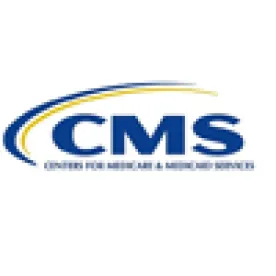In March, CMS issued a State Medicaid Directors Letter (SMDL) about the availability of enhanced federal funding for state Medicaid programs’ eligibility and enrollment (E&E) systems. This SMDL represents CMS’s most recent effort to encourage States to use commercial “off-the-shelf” technology and “software as a service,” instead of customized electronic systems developed and built specifically for individual States.
For both claims processing and E&E, state Medicaid programs have historically hired contractors to build large, state-specific systems, often at great expense. In contrast to a traditional state-specific system, a “commercial off-the-shelf” or “COTS” system uses standardized products sold in the commercial market, generally modified to some degree. “Software-as-a-service” or “SaaS” refers to a system using a software platform owned by a vendor (not the State) that manages and licenses the software “on a pay-for-use or subscription basis, centrally hosted, on-demand, and common to all users.” In recent years, CMS has started to encourage States to transition away from the traditional approach to developing claims processing and E&E systems, and instead use COTS software or SAAS, which CMS believes better “supports modularity and enables other states to leverage successful solutions.”
Increased Federal Support for COTS and SaaS Products
The Medicaid statute provides states with increased federal support for electronic E&E systems. Specifically, CMS provides States with a 90% federal match for “design, development, or installation” and a 75% match for the maintenance and operation of these systems. Until recently, it was not clear whether the 90% match was available for any of the costs associated with COTS software or SaaS, since those products are not designed or developed specifically for the State in the same way that the customized systems are. Recently finalized CMS regulations addressed this uncertainty by expressly providing that the 90% match is available for “costs for initial licensing of commercial off the shelf (COTS) software, and the minimum necessary costs to analyze the suitability of COTS software, install, configure and integrate the COTS software, and modify non-COTS software to ensure coordination of operations.”
The March SMDL further clarifies the extent to which this 90% match is available for the design, development, installation, and/or enhancement of COTS software and SaaS in E&E systems. CMS recognizes that the design, implementation, and installation of a system using COTS software may require configuration and testing, and thus 90% match is available for those activities. However, CMS clarifies that “configuration pertains only to the functionality included in the core software or complimentary software or applications designed specifically to work with that solution. It does not require modification of any of the underlying source code for the COTS software itself.” In addition, CMS explains that the 90% funding is contingent on the COTS software needing only “minimal” customization to be used in the State’s system, because “heav[y] customization” may result in the solution becoming so unique to the State implementing it “that other states are unable to reuse it,” and/or newer releases of the software being used may not “be easily integrated into the state’s system, resulting in a solution that no longer meets the [federal Medicaid Information Technology Architecture] conditions.”
This added clarity surrounding the availability of increased federal match for COTS and SaaS products may cause more States to look to software developers for COTS and SaaS solutions for their Medicaid E&E systems.
Software Ownership and Licensing
For software “designed, developed or installed with federal financial participation,” federal regulations require States to “have all ownership rights” in the software. In addition, the federal government “reserves a royalty-free, nonexclusive, and irrevocable license to reproduce, publish, or otherwise use and to authorize others to use for Federal Government purposes, such software, modifications, and documentation.” These regulations complicate States’ efforts to purchase and use COTS products and SaaS, and they make selling or leasing products to States less appealing for some developers.
The SMDL clarifies that these ownership and royalty-free licensing requirements apply only “to the software related to the customization and configuration” of the product for the State’s use in its E&E system, not “the core product” itself. This allows States to purchase COTS and SaaS products from vendors without requiring the vendor to sell or grant a nonrevocable license for the core technology.




 />i
/>i

